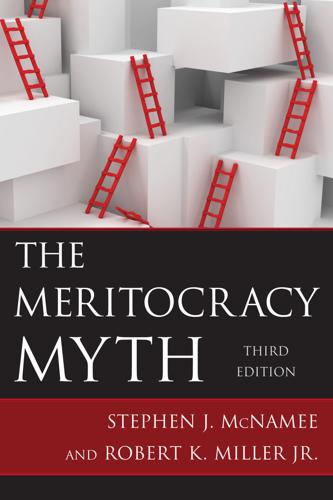
The Meritocracy Myth
by
Stephen J. McNamee
Published 17 Jul 2013
Microsoft was cofounded by Bill Gates (now the richest American with wealth estimated at $66 billion) and Paul Allen (now the twentieth-richest American with wealth estimated at $15 billion) (Forbes 2012b). Gates and Allen were friends who in the late 1960s and early 1970s attended the same exclusive private prep school, Lakeside School in Seattle, Washington. Lakeside had a computer lab (which many universities did not have at the time) where Gates and Allen were first exposed to computing and initially honed their programming skills. After graduating from Lakeside, Gates went on to Harvard University, and Allen went on to Washington State University.

Geek Heresy: Rescuing Social Change From the Cult of Technology
by
Kentaro Toyama
Published 25 May 2015
See also Pradan organization Karlan, Dean, 59–60 Karnani, Aneel, 83–84 Kelsa+ project, 122–125 Kennedy, John F., 7 Kenya, xi–xii, 156–157, 258–259(n4) Khan, Salman, 11 Khan Academy, 11, 14 King, Gary, 49–52 Kinnan, Cynthia, 236–237(n14) Kirp, David L., 214, 275(n5) Kiva.org, 71 Knowledge gap hypothesis, 37 Knowledge management, 44–46 Kohlberg, Lawrence, 161, 260(n18) Kotra, India, 77–82 Kranzberg, Melvin, 24 Kuznets, Simon, 245(n56) Labeling, 172, 264–265(n1) Labor exploitation, 85–86, 166–167, 243(n31) Lakeside School, Seattle, Washington, 14 Language learning, 123–124 Lareau, Annette, 250(n11) Latent desires, 39–41 Law, Lalitha, 140–141 Law of Amplification. See Amplification, Law of Lawson, Mark, 10 Layard, Richard, 88 Leaders in packaged interventions, 66–69 Learned helplessness, 130, 249(n8) Lewis, Oscar, 249(n8) Libya: Arab Spring uprising, 33, 62 Life expectancy, 43, 97, 145 Life satisfaction, 89–91, See also Happiness The Life You Can Save (Singer), 212–214 Life-cycle development, 161 Lincoln, Abraham, 214 Linden, Leigh, 8 Literacy advantage in technology usage, 48 computer literacy, 9, 17–20, 27–28, 105, 122–124 education, 141, 173 interfaces for nonliterate users, 27–29 Japan, 145 telecenters, 105 See also Education and training Locke, John, 96 Lonjo, Jharkand, India, 195–204 Los Angeles Unified School District, 11 Luck, role in outcomes, 56, 144–145, 173, 181, 250–251(n13), 256(n41) Luntz, Frank, 189–190 Lyubomirsky, Sonja, 90, 244(n51) Madison, James, 214 Magic bullet.

The Bill Gates Problem: Reckoning With the Myth of the Good Billionaire
by
Tim Schwab
Published 13 Nov 2023
Gates’s blind spots around racial bias are particularly notable because he has specifically targeted his philanthropic interventions at poor students of color, with a stated mission “to significantly increase the number of Black and Latino students and students experiencing poverty who earn a diploma, enroll in a postsecondary institution, and are on track in their first year to obtain a credential with labor-market value.” It’s worth considering Bill Gates’s own education, which was not aimed at obtaining “a credential with labor-market value.” Before his wealthy family sent him to Harvard, Gates attended the elite, private Lakeside School in Seattle. As he described it in one interview, “I was relieved from some classes, Math in particular, because I’d read ahead. So, I had quite a bit of free time.… I took my first job where I took off part of my senior year in high school … I was a page down in the State Capitol of Olympia, Washington.

Visual Thinking: The Hidden Gifts of People Who Think in Pictures, Patterns, and Abstractions
by
Temple Grandin, Ph.d.
Published 11 Oct 2022
* * * Most coders and software developers have at least two things in common: First, they gravitated toward math at an early age, and second, they see patterns in the code. Bill Gates is a perfect example of a mathematical thinker who was exposed to computing at an early age. Gates was introduced to computers as a teenager at Lakeside School in Seattle. Returning to his high school to give a speech in 2005, he said, “One reason I’m so grateful to Lakeside is that I can directly trace the founding of Microsoft back to my earliest days here.” This is where Gates was first introduced to programming and formed the Lakeside Programmers Group with his friend Paul Allen.

Designing Data-Intensive Applications: The Big Ideas Behind Reliable, Scalable, and Maintainable Systems
by
Martin Kleppmann
Published 17 Apr 2017
Active blogger.", "us:91", 131, "/p/7/000/253/05b/308dd6e.jpg", Relational Model Versus Document Model | 31 "positions": [ {"job_title": "Co-chair", "organization": "Bill & Melinda Gates Foundation"}, {"job_title": "Co-founder, Chairman", "organization": "Microsoft"} ], "education": [ {"school_name": "Harvard University", "start": 1973, "end": 1975}, {"school_name": "Lakeside School, Seattle", "start": null, "end": null} ], "contact_info": { "blog": "http://thegatesnotes.com", "twitter": "http://twitter.com/BillGates" } } Some developers feel that the JSON model reduces the impedance mismatch between the application code and the storage layer. However, as we shall see in Chapter 4, there are also problems with JSON as a data encoding format.
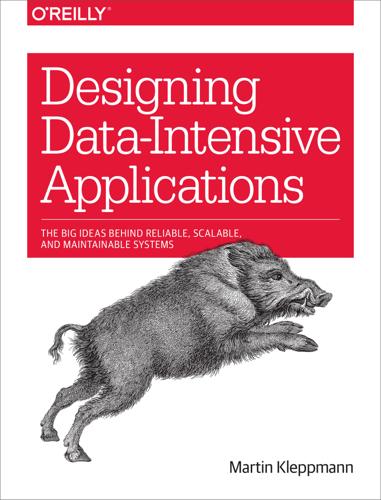
Designing Data-Intensive Applications: The Big Ideas Behind Reliable, Scalable, and Maintainable Systems
by
Martin Kleppmann
Published 16 Mar 2017
Active blogger.", "region_id": "us:91", "industry_id": 131, "photo_url": "/p/7/000/253/05b/308dd6e.jpg", "positions": [ {"job_title": "Co-chair", "organization": "Bill & Melinda Gates Foundation"}, {"job_title": "Co-founder, Chairman", "organization": "Microsoft"} ], "education": [ {"school_name": "Harvard University", "start": 1973, "end": 1975}, {"school_name": "Lakeside School, Seattle", "start": null, "end": null} ], "contact_info": { "blog": "http://thegatesnotes.com", "twitter": "http://twitter.com/BillGates" } } Some developers feel that the JSON model reduces the impedance mismatch between the application code and the storage layer. However, as we shall see in Chapter 4, there are also problems with JSON as a data encoding format.
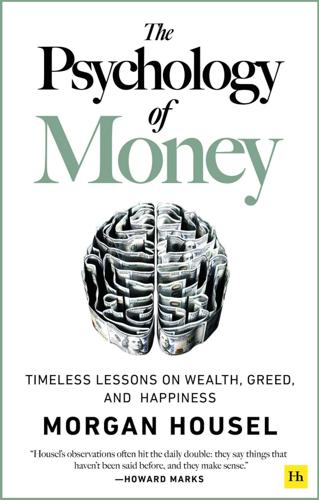
The Psychology of Money: Timeless Lessons on Wealth, Greed, and Happiness
by
Morgan Housel
Published 7 Sep 2020
NYU professor Scott Galloway has a related idea that is so important to remember when judging success—both your own and others’: “Nothing is as good or as bad as it seems.” Bill Gates went to one of the only high schools in the world that had a computer. The story of how Lakeside School, just outside Seattle, even got a computer is remarkable. Bill Dougall was a World War II navy pilot turned high school math and science teacher. “He believed that book study wasn’t enough without real-world experience. He also realized that we’d need to know something about computers when we got to college,” recalled late Microsoft co-founder Paul Allen.
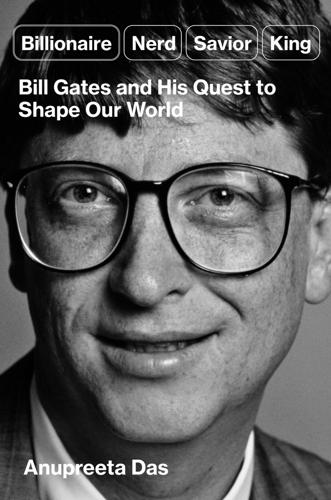
Billionaire, Nerd, Savior, King: Bill Gates and His Quest to Shape Our World
by
Anupreeta Das
Published 12 Aug 2024
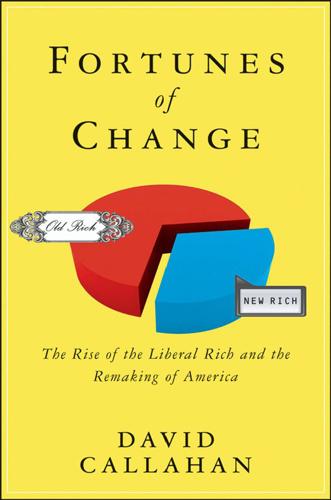
Fortunes of Change: The Rise of the Liberal Rich and the Remaking of America
by
David Callahan
Published 9 Aug 2010
c11.indd 245 5/11/10 6:26:21 AM 246 fortunes of change Thus yet another irony: the richest kids at the wealthiest schools may get the best opportunities to tackle social problems. Money is no object in exposing these kids to hardship in even the most distant corners of the world. For instance, a dozen students and three teachers from the Lakeside School in Seattle—Bill Gates’s alma mater—have traveled to a rural village in China three years in a row to teach English at the local elementary school. Other Lakeside students have traveled to places such as Senegal, India, and Morocco to fulfill the school’s requirement of eighty hours of service. “Our goal is to inspire and empower students to be agents of change both in their local communities and in the international arena,” Lakeside says about its well-funded Global Service Learning Program.
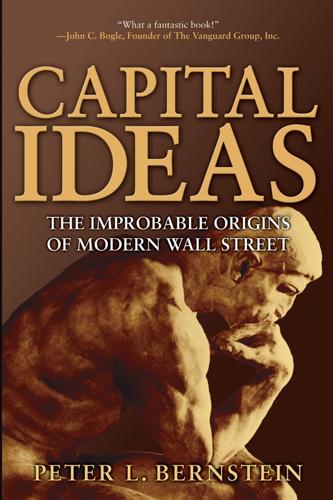
Capital Ideas: The Improbable Origins of Modern Wall Street
by
Peter L. Bernstein
Published 19 Jun 2005
Most important, Leland was confident that Rubinstein would not run off and put the idea into practice himself or spill the beans to someone with less integrity. “Mark is the most honest person I’ve ever known,” Leland told me. Rubinstein was “a computer nut” as well. He fit the bill to perfection.6 Leland and Rubinstein had both gone to Lakeside School in Seattle, but four years’ difference in their ages meant that they barely knew each other, and Leland had transferred to Exeter before going on to Harvard in 1960. Leland entered Harvard with the intention of studying math and physics, but he soon decided that economics would bring him closer to the real world.

Posh Boys: How English Public Schools Ruin Britain
by
Robert Verkaik
Published 14 Apr 2018
In November 2016 Warren Buffett said one of the greatest challenges facing America was the rich opting out of the public education system. ‘I imagine that if I used the local golf courses, I’d care a lot about how they were managed and maintained – it’s the same with schools. There’s a two-tiered system right now.’27 Similarly Bill Gates, who went to the private Lakeside School in Seattle, has tried to raise standards in the state education system by pouring millions of dollars into charter schools that cater for disadvantaged pupils.28 If we are all agreed – that there is a private education problem – then we need to decide what kind of changes will bring about the social mobility and restored faith in meritocratic democracy that public schools are working against.

A First-Class Catastrophe: The Road to Black Monday, the Worst Day in Wall Street History
by
Diana B. Henriques
Published 18 Sep 2017
The next morning, he realized he needed someone who knew more about the mechanics and theory of options than he did. Specifically, he needed Mark Rubinstein, his trusted friend and colleague on the business school faculty. Rubinstein was a rumpled man whose formidable intellect was clothed in almost childlike curiosity. He got his high school education at the Lakeside School in Seattle, the “haven for math freaks” that would also educate Bill Gates, the cofounder of Microsoft. Rubinstein had been two years behind Leland in Harvard’s undergraduate economics department, and had gone on to earn his master’s from Stanford and his doctorate from the University of California at Los Angeles.
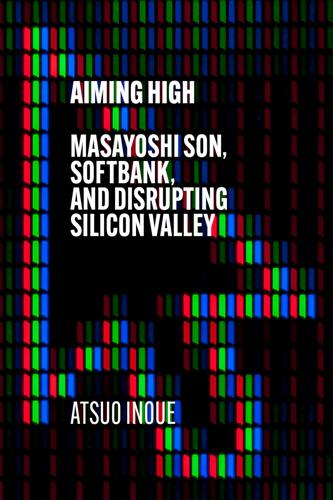
Aiming High: Masayoshi Son, SoftBank, and Disrupting Silicon Valley
by
Atsuo Inoue
Published 18 Nov 2021
The article in question would have appeared quite small and inconsequential to your average reader, announcing the launch of the $350 Altair computer kit manufactured by MITS, a company based in Albuquerque, New Mexico. Gates got in touch with Paul Allen, his friend and fellow computer genius, straight away. Allen had met Gates when they were students at Lakeside High School in Seattle after they started using a PDP-10 teletype unit the school had bought to access a time-shared computer. The two were fascinated. Their reaction was: ‘The time’s come for us to port BASIC (a programming language for beginners) to microcomputers and there’s not a moment to lose!’ It was the start of an arms race within the nascent computer industry and the two had just developed a way for BASIC to run on an Altair.
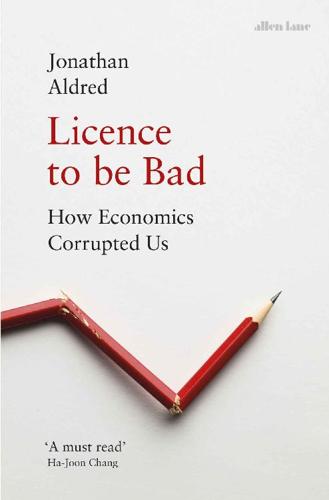
Licence to be Bad
by
Jonathan Aldred
Published 5 Jun 2019
The richest people in advanced countries are not aristocrats but entrepreneurs such as Bill Gates.’13 As well as often being dubbed ‘world’s richest person’, Bill Gates seems to be a nice guy. A leading philanthropist, he seems the model of someone who used their substantial talent and worked extremely hard to achieve great success. Yet a closer look at his rise tells a less heroic story.14 Thanks to family wealth, he went to Lakeside, a private school in Seattle that had something few schools in the world had in the late 1960s – a computer. Gates was hooked early on. After more lucky breaks, Gates dropped out of Harvard and set up Microsoft (with another former Lakeside computer enthusiast). By the late 1970s the leading operating system in the nascent field of desktop computers was called CP/M (Control Program for Microcomputers).

Fire in the Valley: The Birth and Death of the Personal Computer
by
Michael Swaine
and
Paul Freiberger
Published 19 Oct 2014
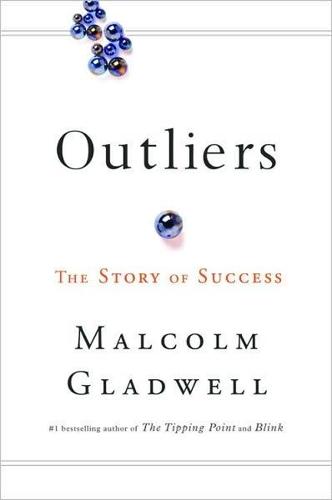
Outliers
by
Malcolm Gladwell
Published 29 May 2017
Let's dig a little bit deeper. Gates's father was a wealthy lawyer in Seattle, and his mother was the daughter of a well-to-do banker. As a child Bill was precocious and easily bored by his studies. So his parents took him out of public school and, at the beginning of seventh grade, sent him to Lakeside, a private school that catered to Seattle's elite families. Midway through Gates's second year at Lakeside, the school started a computer club. “The Mothers' Club at school did a rummage sale every year, and there was always the question of what the money would go to,” Gates remembers. “Some went to the summer program, where inner-city kids would come up to the campus.

No Such Thing as a Free Gift: The Gates Foundation and the Price of Philanthropy
by
Linsey McGoey
Published 14 Apr 2015
‘We know that of all the variables under a school’s control, the single most decisive factor in student achievement is excellent teaching’, Gates writes in an article for the Washington Post. ‘One approach is to get more students in front of top teachers by identifying the top 25 per cent of teachers and asking them to take on four or five more students. Part of the savings could then be used to give the top teachers a raise’.23 Gates himself attended Lakeside, a private school in the Seattle area where students average about sixteen per class. Many charter schools emphasize the small size of their own classes as an enticement to parents. The Harlem Children’s Zone charter schools, one of the models lauded in the Superman documentary, boast small class sizes, largely thanks to private philanthropic donations that enable the charter schools to spend about $16,000 per student in the classroom each year, plus thousands of dollars in out-of-class spending on field trips and social services – an admirable programme but not one easily replicable across the nation.24 New York doyen Michael Bloomberg has repeatedly stressed that class size does not matter.
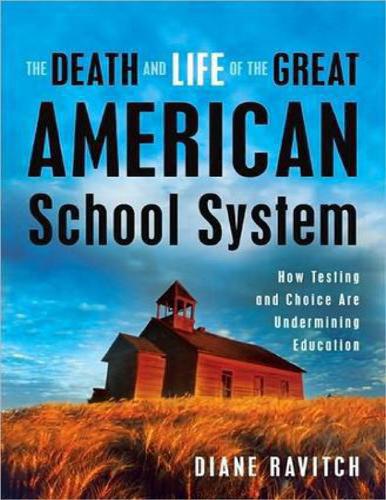
The death and life of the great American school system: how testing and choice are undermining education
by
Diane Ravitch
Published 2 Mar 2010
The schools that got the best results, he said, were charter schools—such as KIPP and High Tech High in San Diego—that have significantly longer school days than regular public schools. He also stressed the difference that a “great teacher makes versus an ineffective one.” He fondly recalled his teachers at Lakeside, the private school he attended in Seattle, who “fueled my interests and encouraged me to read and learn as much as I could.” It was clear that the richest foundation in the world planned to put its considerable resources into the proliferation of charter schools and into the issue of teacher effectiveness: how to improve it and how to terminate ineffective teachers.31 Given the foundation’s significant investment in advocacy, it was improbable that anyone would challenge Bill Gates and tell him his new goals were likely to be as ill advised as the $2 billion he had poured into restructuring the nation’s high schools.

The Code: Silicon Valley and the Remaking of America
by
Margaret O'Mara
Published 8 Jul 2019
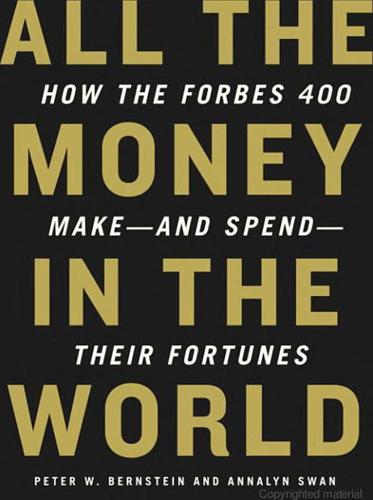
All the Money in the World
by
Peter W. Bernstein
Published 17 Dec 2008
As one executive headhunter puts it, “CEOs are hired5 for their intellect and business expertise—and fired for a lack of emotional intelligence.” * * * Where A Is for Apple, B Is for Billionaire… How many grammar and high schools can lay claim to four slots on the Forbes 400 and a raft of other notable grads? For the moment, Lakeside School, on an ersatz New England campus in Seattle—and with fewer than eight hundred students in grades 5 to 12—is the clear winner. Bill Gates and Microsoft cofounder Paul Allen (2006 combined net worth: $69 billion), its two most famous grads, got their start at the school on a computer provided partly by Lakeside’s Mothers’ Association.